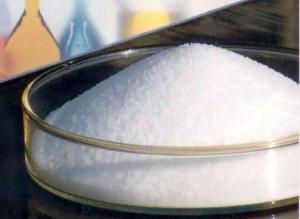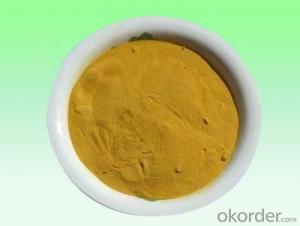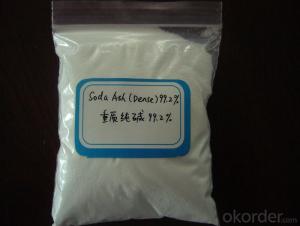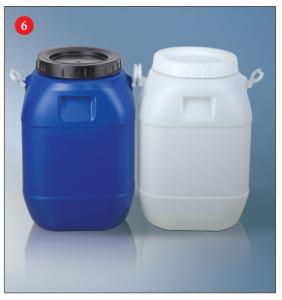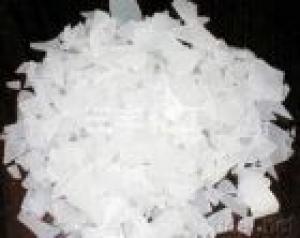Soda Ash Dense Light with Good Price ans SGS Test
- Loading Port:
- China Main Port
- Payment Terms:
- TT or LC
- Min Order Qty:
- -
- Supply Capability:
- -
OKorder Service Pledge
OKorder Financial Service
You Might Also Like
1. Structure of Soda Ash Description:
CAS NO.: 497-19-8
MF: Na2CO3
Grade Standard: Industrial Grade
Standard:GB210-92
HS Code: 28362000
Purity: 99%~99.2%
Packing&Delievery: 25/40/50kg/bag,750/1000 jumbo bag,plastic woven bag with PE liner
All year Delievery
2. Main Features of Soda Ash:
1.CAS NO.: 15630-89-4
2.Type: coated and uncoated
3.Application: Bleaching, sterilization
4.Better than Sodium Perborate
Sodium percarbonate is a chemical, an adduct of sodium carbonate and hydrogen peroxide (a perhydrate), with formula 2Na2CO3· 3H2O2. It is a colorless, crystalline, hygroscopic and water-soluble solid. It is used in some eco-friendly cleaning products and as a laboratory source of anhydrous hydrogen peroxide.
This product contains the carbonate anion, and should not be confused with sodium peroxocarbonate Na2CO4 or peroxodicarbonate Na2C2O6, which contain different anions.
Sodium percarbonate is very neat stuff. It is a powder that releases hydrogen peroxide, and it is very concentrated.
To be complete, sodium percarbonate releases hydrogen peroxide and soda ash. As we know, hydrogen peroxide breaks down into oxygen and water. As you may expect, then, sodium percarbonate breaks down into oxygen, water, and soda ash.
3.Soda Ash Images



4.Soda Ash Specification
Item | Soda Ash Dense | Soda Ash Light |
Index | Index | |
Total alkali(quality fraction of Na2CO3 dry basis) | 99.2% min | 99.2% min |
NaCI (quality fraction of NaCI dry basis) | 0.70% max | 0.70% max |
Fe quality fraction (dry basis) | 0.0035% max | 0.0035% max |
Sulfate(quality fraction of SO4 dry basis) | 0.03% max | 0.03% max |
Water-fast substance in quality fraction | 0.03% max | 0.03% max |
Accumulation density(g/ml) | 0.90% min | |
Particle size, 180 µ m sieving residue | 70.0% min |
5.FAQ
1)How many tons does your factory can supply each moth?
30000tons/month
2)How to quarantee the quality of the products?
you can arrange SGS&BV or other quality inspection.
3)How many days you need to pepare the cargo after we made the order?
within 30 days.
- Q: What is the zinc oxide?
- Zinc oxide is an oxide of zinc. Hard to dissolve in water, soluble in acid and alkali. Zinc oxide is a commonly used chemical additive, widely used in plastic, silicate products, synthetic rubber, lubricants, paint coatings, ointment, adhesives, food, batteries, flame retardants and other products in the production. Zinc oxide band gap and exciton greater binding capacity, high transparency, excellent room temperature luminescence performance in the semiconductor field of liquid crystal display, thin film transistors, light-emitting diodes and other products are used. In addition, the micro-particles of zinc oxide as a nano-materials also began to play a role in related areas.
- Q: What is the common substance oxide in junior middle school chemistry
- Elemental: chlorine, hydrogen, oxygen, nitrogen, sulfur, carbon, phosphorus, aluminum, potassium, sodium, magnesium, iron, silver, copper, zinc and so on.
- Q: What foods contain zinc-containing inorganic salts
- No. 4: Chibi (11.58 / 34g / 100g)
- Q: What cells produce the collagen and inorganic salts of bone matrix?
- Inorganic Salts In Bone
- Q: Diamond graphite c60 are simple elements do?
- Diamond, graphite, C60 are composed of carbon elements of the elemental, diamond, graphite is composed of carbon atoms, C60 is composed of molecules that C60 molecules, diamond and graphite due to the different arrangement of carbon atoms so there is a great physical properties Differences, the diamond is the natural existence of the most hardest material, graphite can be conductive to do the electrode, activated carbon and charcoal can adsorb toxic gases and pigments, carbon simple chemical properties similar to both flammability and reductive, combustion to produce carbon dioxide.
- Q: Is the base and baking soda the same substance?
- Is a substance. Life called alkali, chemical called baking soda, are sodium bicarbonate.
- Q: Alkali soda water
- In 1772, Joseph Plistree published a book, "Combination of Water and Gas," describing the drop of sulfuric acid on chalk, releasing carbon dioxide and encouraging people to collect gas with a bowl full of water. In 1771, the Swedish chemist Luben Bergman independently invented a manufacturing process similar to that of Joseph Plistry's discovery of carbonated water. But less successful, he managed to produce natural bubbling spring water, then think that bubbling spring is good for health. Now, carbonated water is made by pressurized carbon dioxide through water. The pressure of the pressure is stronger than the standard atmospheric pressure, so that it increases the solubility, so that carbon dioxide into the. When the bottle is opened, the pressure is released, the gas forms a bubble out, thus forming a unique bubble. The best known for carbonated water is the advantage of removing stains, such as coffee stains in coffee cups, or silver stains. It is said that the wine stains can be mixed with salt, and then add a lot of carbonic acid to remove. Carbonated water is available at the grocery store and is also very simple. To the supermarket condiment counter bought to eat soda powder. Then prepare a bottle of mineral water. Will be a drink of water cups, put a spoonful of soda powder, how much soda powder can be based on personal taste to set. If put more, too salty, some people can not stand, put less. And then filled with mineral water, pay attention to the water must be cool. Now the living standard is good, every day big fish and meat eat, the body eat into acidic, drink soda can be neutralized in the body acid and alkali balance, good for health. Drink once or twice a week, stick to it, the body will feel particularly cool.
- Q: What is the risk of low inorganic salt?
- Iodine content in the human body is much lower than 1/10000 is a trace element. Function iodine in the human body to participate in the formation of thyroid. In the protein, fat, sugar metabolism promote bio-oxidation and coordination of oxidation of phosphoric acid process, adjust the energy conversion. Promote the metabolism of sugar and fat, regulate the water and salt metabolism in the organization, promote the absorption and utilization of vitamins, activate many important enzymes, promote growth and development. Lack of disease adult iodine deficiency can cause goiter ⑴ fetal and neonatal iodine deficiency can cause minor illnesses. Typical cases endemic goiter and local minor illnesses. Excessive symptoms iodine goiter, iodine thyrotoxicosis. Supply Adult 150ug Pregnant woman 175ug 206 Emulsifier 200ug. Food source 海 seafood seaweed, seaweed, fresh fish, clam dry, clam dry, scallops, mussels hai sea cucumber, jellyfish, lobster, etc.
- Q: What is the acid anhydride?
- An acid anhydride is defined as the removal of a molecule of water from an acid, and the remainder is called the acid anhydride of the acid. General inorganic acid is a molecule of the acid, the direct loss of a molecule of water to form the acid anhydride, the acid anhydride to determine the acid value of the same price. While the organic acid is two molecules of the acid or more
- Q: The difference between the ignition of inorganic salts and organic matter
- Sodium is the main ingredient of salt. China Nutrition Society recommended adults over the age of 18 sodium suitable for daily intake of 2.2 grams, the elderly should take light food. Sodium is commonly found in a variety of foods, the main source of sodium sodium, soy sauce, pickled food, smoked food, salty food.
Send your message to us
Soda Ash Dense Light with Good Price ans SGS Test
- Loading Port:
- China Main Port
- Payment Terms:
- TT or LC
- Min Order Qty:
- -
- Supply Capability:
- -
OKorder Service Pledge
OKorder Financial Service
Similar products
Hot products
Hot Searches








